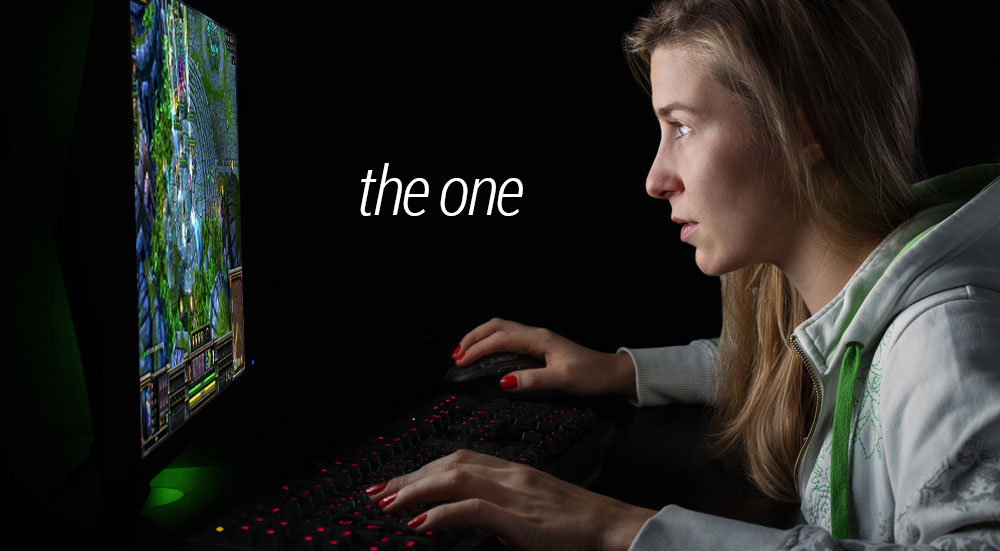
2014, PAX Australia. I stand on the outskirts of a ponderous crowd. A friend, he also writes about video games for a living, is beside me. We are confused. Ahead of us to our right is --- absolutely --- the largest screen present at the show. It is dozens of metres high. It dwarfs every other screen in the convention hall. Five years ago that screen would have been playing Call of Duty, or Assassin's Creed. Halo at a push. A group of strangers might have been up on stage playing 'Hot for Teacher' on plastic instruments.
But today the screen is playing a different game. Today it is playing League of Legends. To reiterate: we are confused. 'Things' are happening on the screen, people are cheering in response but we have no way to parse precisely what they're cheering at and why.
My friend --- the journalist --- taps me on the shoulder. We've both been writing about video games for the better part of a decade.
"Do you have any idea what is going on here?" He asks.
No. No I don't.
Hours later. I stand on the outskirts of another crowd in the centre of the second-biggest booth at PAX Australia. I'm watching a similarly-sized crowd react to similar things in another video game I don't understand: World of Tanks. It suddenly occurs to me: the two largest booths at PAX Australia --- Australia's largest gaming convention --- are dedicated to video games I don't understand.
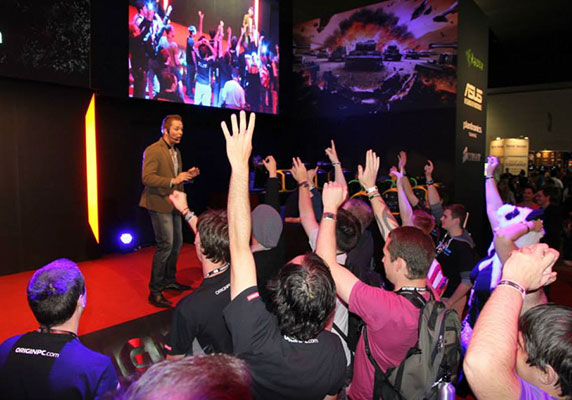
Minutes later I sit in what could only be described as a "war room". A space in the precise centre of the gargantuan Wargaming booth where confused journalists like me can ask questions.
Max Chuvalov awaits, in a suit he is far too young to be wearing. He is a marketing manager at Wargaming and it's his task to explain to me what the hell is going on. Sergey Vorobyev, deputy director of development on the game itself, is next to him. He doesn't talk much. He mostly just plays World of Tanks.
But I don't want to play World of Tanks; I want an explanation. I want to know how and why this product --- a niche video game about a niche interest --- has now topped over 100 million users. I want to know where all this bloody money comes from.
"It's a secret ingredient," says Max, laughing.
The story Max tells is the story you might expect. Upon release, World of Tanks was new. It was refreshing. It was, in marketing terms, "sticky". World of Tanks was a reality-based MMO in a market swamped with fantasy clones. It was, in a word, disruptive.
Then Max says something interesting.
"The key thing," he explains, "is the service approach to gaming.
"That approach is the most crucial factor."
'Service'. We're not used to thinking about video games as a 'service'. For the most part we think of video games as products. That makes sense because, for the last 40 years, that's precisely how they've been sold to us. But the landscape is changing and, for those of us that play video games more traditionally, it's a little bewildering. According to online service Raptr, the most played game on PC in 2014 wasn't a AAA production. It wasn't Call of Duty or Battlefield. It wasn't even Minecraft.
It was League of Legends. And it wasn't even close.
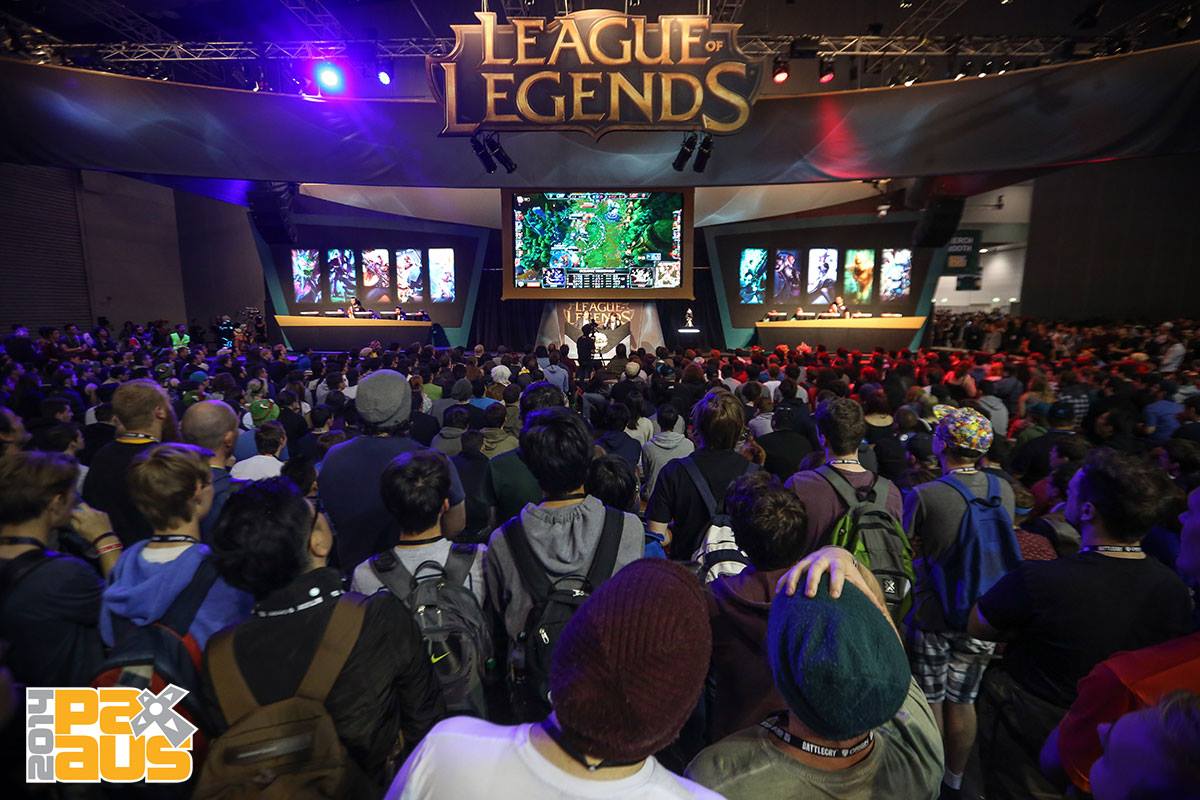
"There's no magic formula that you can repeat or replicate."
That's Mirko Gozzo, country manager for Riot Oceania, the company responsible for taking League of Legends to Australia. Talking to Mirko is eerily similar to talking to Max Chuvalov. In terms of origin stories World of Tanks and League of Legends are worlds (or leagues) apart --- League of Legends was developed in response to Warcraft III; World of Tanks was a game built for history buffs --- but when it comes to growing and retaining dramatically large audiences, both have plenty in common.
"I could talk all day about what a game as a service means but for us it's a lot about engaging with our community," says Mirko. I seem to remember Max from Wargaming saying something similar.
Actually Max said something more specific. He said: "this isn't a product, it's a culture". A statement that applies to both World of Tanks and League of Legends.
What does that mean exactly? We are used to the idea of gaming itself as a culture --- but that's gaming as a monosyllabic 'thing'. We're not used to pointing to one solitary video game and saying "this is a culture".
"this isn't a product, it's a culture"
Yet, that's precisely what's happening and in many ways it makes perfect sense. Games like World of Tanks and League of Legends have a way of ensnaring players; a way of sucking up disposable time to the point where chunks of the audience devote all their time to one single game. One. Single. Video game. Not 'gaming' as a catch-all term. One game.
"League of Legends is a lifestyle."
It really is.
Mirko agrees that a large chunk of its player-base is dedicated solely to League of Legends. "I am one of those people," he concedes. At Riot Games, this is part of the strategy --- create different avenues for engagement. If players want to remain connected to the game it is Riot's responsibility to provide those avenues or, at least, help facilitate a community who live, breathe and bleed League of Legends. That means forums, competitions, events, soundtracks. That means listening to feedback, being proactive about how you engage with the community. Allowing developers to speak directly to the players, using their suggestions, implementing them into the game itself.
"We are constantly connected with players," explains Mirko. "It's a fluid, two way communication and that's the best source of ideas for a company like Riot."
---
But when it comes to promoting its video game as a service or a 'culture', Wargaming operates on a different plane. Not only is World of Tanks its own culture, it's a service that attempts to infiltrate and support the broader culture it has become a part of.
"We're moving into things outside the game," says Max.
What does that mean? Specifically, it means working with museums on military exhibits. It means supporting historical research on military vehicles. It means literally helping teams of experts extract and restore old tanks. It means working with schools and universities. There are institutions using World of Tanks as a virtual handbook. Wargaming has its own internal researchers publishing books with new information in the field of military history.
Quite literally Wargaming is making World of Tanks --- the product --- an indispensable part of military history itself. It has become an inextricable section of that culture. World of Tanks is pushing the boundaries of gaming as a 'service'. You get the sense that Wargaming will not rest until every single person with even the vaguest interest in military vehicles is playing World of Tanks.
But with 100 million people across the globe current playing the game, Wargaming may have already succeeded in that task. World of Tanks is, obviously, an astronomical success, yet the concept is niche. It's niche by definition. World of Tanks is a hobbyist's video game. 20 years ago its audience would have been building scale models, they might not necessarily have been playing other video games.
This is World of Tanks. A niche video game on a grand global scale; efficiently targeted, efficiently marketed. A game as a service, managed by a company that is truly committed to its customer base in a way that most traditional publishers couldn't even imagine.
In that regard World of Tanks is truly unique.
Or is it?
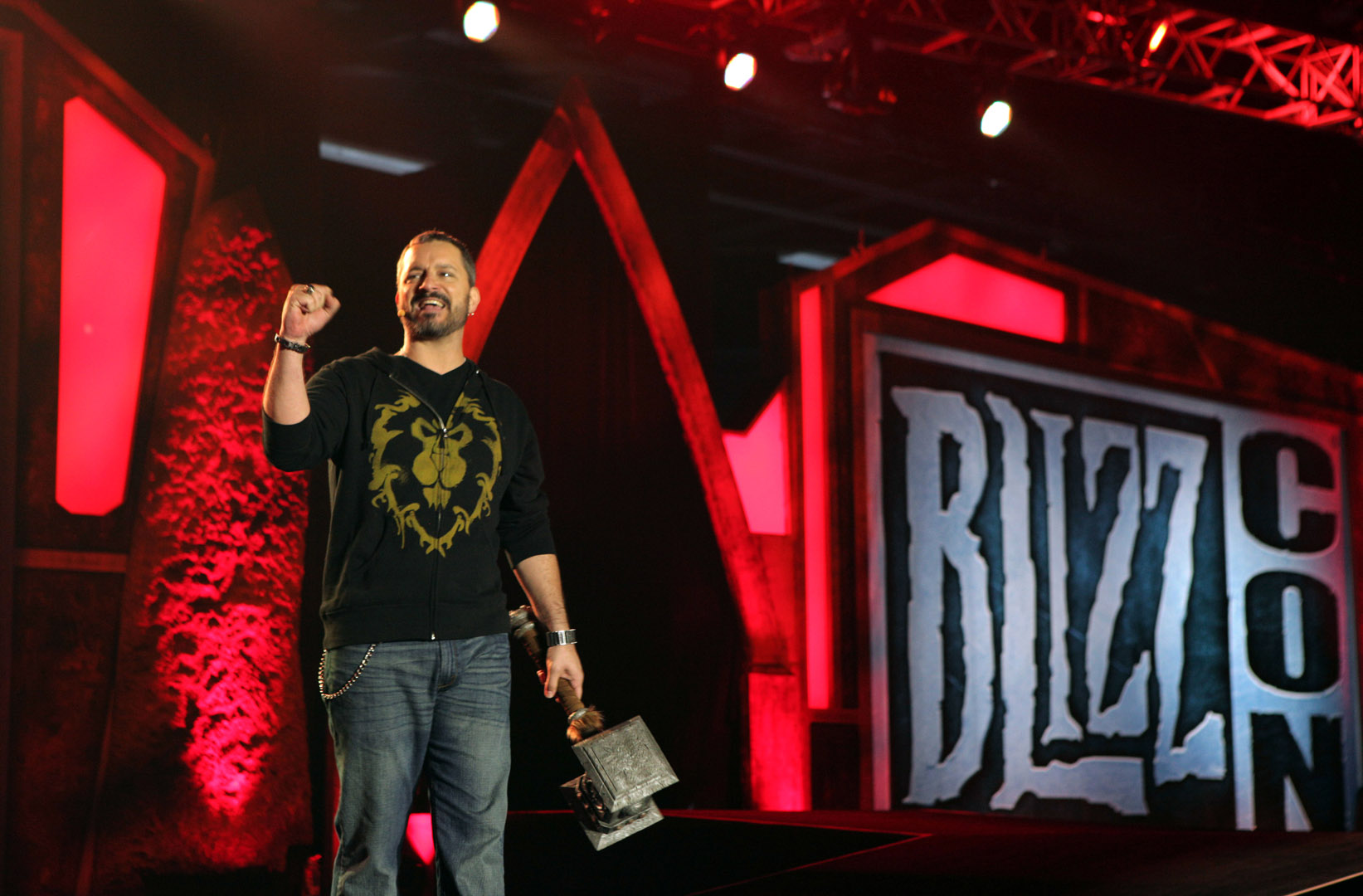
"This community is everything. Look around this room. It's amazing to be part of this thing."
Blizzcon 2014. The opening address. Chris Metzen controls the stage like a bearded techno-pastor. He is preaching to the choir. This is his church and the 10,000-strong congregation is in the palm of his hand. 20 rows back I sit entranced. I don't consider myself a fan of Blizzard --- I've barely played any of their games --- but if Metzen were to drag me onto the stage I'm certain he'd have me speaking in tongues. The collective enthusiasm and energy of this crowd is palpable. Also: contagious.
Hours later I try and explain this feeling to Paul Sams, the COO of Blizzard; the feeling of being an outsider swept away in the religious fervour of the Blizzard community. He finds it hilarious.
"We were ministering to you," he laughs.
If World of Tanks is the new master of speaking to broad niche audiences, then World of Warcraft is the progenitor of that mantle. Max Chuvalov from Wargaming all but admitted World of Tanks was created in response to the house that Blizzard built. Blizzard are the inventors of the service game on a grand scale. 10,000 people, bums on seats in the Anaheim Convention Centre is proof of that fact.33
To hear Sams tell it, community is the source of all that is good at Blizzard. The line dividing Blizzard and its fanbase is razor-thin and, at Blizzcon, it disappears completely. "Don't forget," he tells us, "these are our brothers and sisters. This is our family."
"Don't forget," he tells us, "these are our brothers and sisters. This is our family."
Blizzcon is the literal heart of the swarm. It's the reflection of a company built on the idea of games as service, a company that places its community at a premium. This is the blueprint that Wargaming and Riot follow: build your games, grow your community, support that community. Support the games you create at all costs. The audience will come in droves and --- more importantly --- that audience will stay put.
"We support our games," explains Sams, "even games that don't have an ongoing pay structure."
Take Starcraft, for example, a game released in 1998. Blizzard, says Sams, was still putting out patches for Starcraft in 2010, 12 years after its release. Starcraft: a game with no subscription model, a game built when micro-transactions weren't a blip on any kind of horizon. "These players are our family," says Sams. "If there's something broken in our house we still have to go and fix it. Most publishers would be like, "it's 10 years old, we're not supporting that crap any more!"
That's the kind of service that inspires loyalty in consumers or a community: the kind of loyalty that pays dividends when it comes time to release a game that is dependent on support. A game like, say, World of Warcraft.
It's a long-term strategy, and one that's extremely common in today's marketplace. Almost all mobile games fall into this category, particularly in the free-to-play realm. The idea of your consumer-base operating as a continual source of income is a potent one. Blizzard has mastered the model. In many ways it invented the model. But Sams hesitates to define Blizzard's process as 'ground-breaking'. On the contrary, Blizzard has always taken pride in its ability to take existing models to broader mainstream audiences.
"I tend to shy away from the idea of calling ourselves pioneers," says Sams. "It feels kind of egotistical. But did we do certain things first, did we try and make things better? Yes, but a lot of companies have tried to do the same thing.
"One of the things we love to do is take something we love --- genres and products we love --- and find a way to amplify them."
---
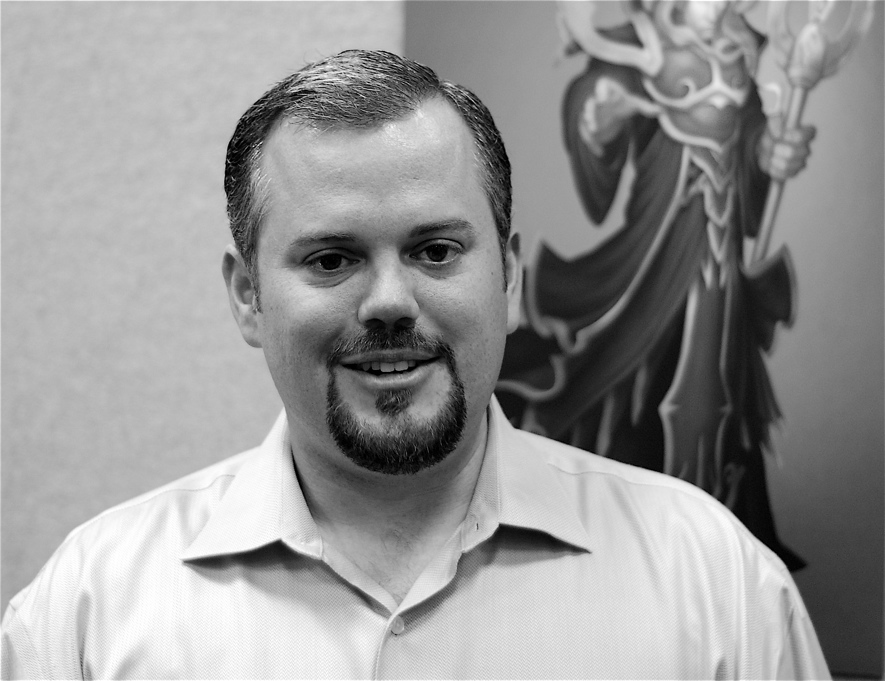
"They're doing their thing but I don't think they're stealing our thing," he explains.
He's not worried about losing a portion of the fanbase to newer 'service' games.
"There is a trend of people starting to play one game. But we have a lot of confidence that we'll be the creator of that one game.
"We're not so naive to think our fans don't try other games, but I have confidence that they will come home. People leave home, but they always come back to visit. It doesn't worry me when other companies make great games because we're always going to be bringing something new to the table. They'll come home."
In this extended metaphor "home" could be Blizzard. "Home" could be Blizzcon itself, where users converge to share stories and engage in a common obsession. "Home" could refer to the games themselves: to Starcraft, World of Warcraft, Hearthstone. More likely it refers to the worlds fans inhabit. Worlds that evolve, shift and morph according to player wants and needs.
Paul Sams shares a story. During a panel for the upcoming World of Warcraft movie director Duncan Jones asked for some help. He hung a boom mic above the crowd. First he asked them to scream "for the Horde" then the catch call for the opposing side: "for the Alliance". The crowd screamed with all their collective might. Jones then made an announcement: the recording made by the 5000-strong crowd would be used in the actual World of Warcraft movie. Everyone who attended the panel that day would be part of the Warcraft movie. That, says Sams, is reflective of Blizzard's attitude towards its games and the relationship it has with its audience.
"This isn't a world that we created that's ours alone," says Sams. "This is a world that belongs to our players."
